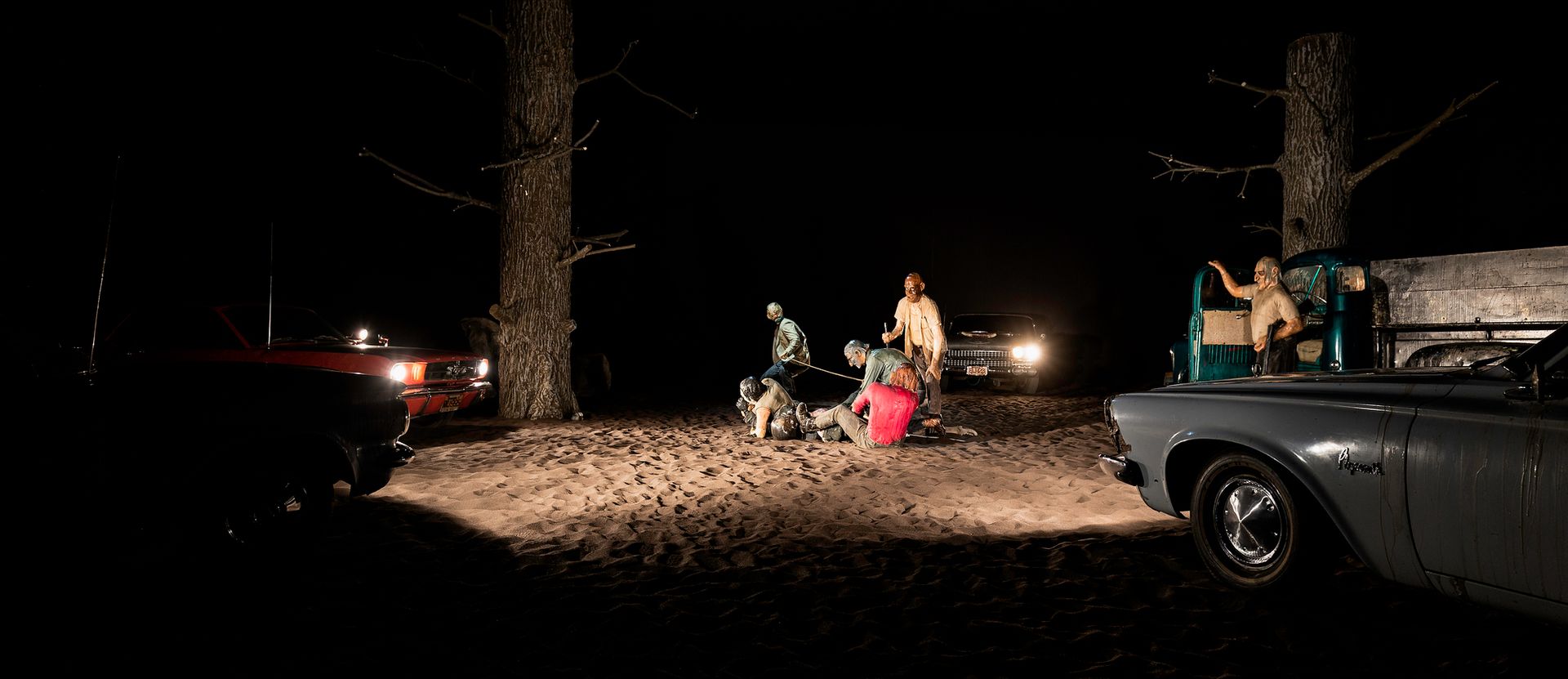For nearly 40 years, Ed Kienholz’s Five Car Stud (1969-72), a dark installation depicting a brutal racist attack, lay hidden away in storage in Japan. It is now on public view in Milan at the Fondazione Prada, which acquired the work in 2012, soon after it was restored by the artist’s widow and collaborator Nancy Reddin Kienholz.
“Five Car Stud is a terrifying scene that reflects the contradictions of a society that professes equality and freedom but does not accept the other,” the curator Germano Celant, who has organised the Prada display, told The Art Newspaper over email. “Kienholz seeks to break down the certainties and controlled state of mind of members of the art-viewing public. He is attempting to destabilise their emotions, inviting them to engage in a reflection at once social and noble with respect to racial violence.”
The work, first shown at Documenta 5 in Kassel in 1972, was restored in 2011 and displayed in the US for the first time at the Los Angeles County Museum of Art, as part of the citywide art programme Pacific Standard Time. Despite the years that had passed since the work was completed, it continued to have a strong affect on visitors. “I was not prepared to be overwhelmed by a surge of emotions so disturbing, it almost made me throw up,” said Edward Goldman, the art critic on Los Angeles’ public radio station KCRW, at the time. “And this is probably the best compliment one can give to this amazingly powerful work of art.”

“It’s a very difficult piece,” Reddin Kienholz told The Art Newspaper while she restored the work at their home in Idaho. “It was depressing to have to work on it.” Unlike many of Kienholz’s other sculptural works, the room-sized Five Car Stud allows visitors to walk through and around the installation. “You’re no longer just a voyeur, you’re a participant,” Reddin Kienholz said. “You will be confronted by it. Don’t expect to walk in it and be too comfortable. I find it scary and I’m used to it.”
At the Fondazione Prada, Five Car Stud forms the centerpiece of an exhibition on the artists organised by Celant that brings together 25 works created between 1959 and 1994. The show (until 31 December) includes other similarly powerful pieces, such as the The Caddy Court (1986-87), an macabre view of the US justice system in which visitors walk through a police car to see a bench populated by judges with taxidermied animal heads and Jody, Jody, Jody (1994), a stark depiction of child abuse and neglect inspired by an actual girl who was found abandoned by her father on a California highway.

“Kienholz does not tend to sublimate the lowness and tragedy of life,” Celant says in a press release, “the conditions of solitude and triviality, but rather uses them as tools that can highlight the low, popular universe, a place where the emaciated and filthy, the perverse and lurid, represent a new, surprising beauty.”
• Kienholz: Five Car Stud is on view at the Fondazione Prada, Milan, 19 May-31 December

